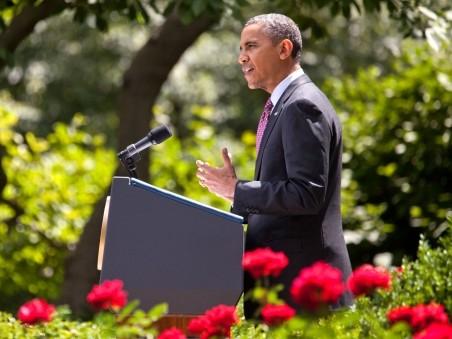The nonpartisan Congressional Budget Office (CBO) last Friday released its analysis of President Obama’s budget for fiscal year 2013, concluding that the president’s plan will create a $977 billion dollar fiscal deficit for next year.
The Obama administration first released its budget request for the 2013 fiscal year last month, detailing a host of new fiscal policies that are designed to bring the nation’s budgetary situation under control. Included are mandatory caps on discretionary spending and a revised defense strategy that slims down the military and decreases defense spending.
Other changes proposed by the president include raising income taxes on high-income-earning Americans by allowing the Bush tax cuts to expire and implementing the “Buffett rule,” making reforms to Medicare and Medicaid on top of the reforms already legislated through the Affordable Care Act, and implementing other savings by reducing agricultural subsidies and making changes to federal employee retirement and health benefits.
The newly released report by the nonpartisan CBO analyzes the fiscal impact of president’s budget using its own assumptions and methodology, which are different from that of the administration’s. The CBO, for instance, projects $1.5 trillion less in expenditures under the president’s budget than the White House does, while the White House makes rosier assumptions about tax revenues, primarily due to differing assumptions about wages and salaries.
Apart from the $977 billion deficit for 2013, the analysis also finds that the deficit for fiscal year 2012 will total about $1.3 trillion, and that all deficits over the next decade would total about $6.4 trillion. The report also concluded that the policies that would most contribute to increasing the projected deficit were the president’s plans to extend certain tax cut provisions, while the policy that would contribute most toward reducing the deficit would be the conclusion of the war in Afghanistan.
The White House and the Office of Management and Budget (OMB) reacted to the CBOs findings with a sense of validation.
“CBO found that by 2016 deficits as a share of the economy would be below 3 percent—a key milestone of fiscal sustainability,” said OMB Director Jeff Zients. “It found that after implementing the president’s budget, debt held by the public will decrease and then stabilize as a share of the economy, also a key indicator of improving fiscal health. Finally, relative to CBO’s alternative fiscal scenario representing what happens if current policies are continued, the president’s budget reduces the deficit by more than $4 trillion, according to CBO’s own estimates.”
Each year, the president, through the White House’s Office of Management and Budget, releases his annual budget request for the next fiscal year. The CBO, which is a nonpartisan congressional office, analyzes the president’s budget using its own procedures and assumptions about the economy. The analysis is usually done in two parts: The first part is an analysis of the president’s budget without considering its impact on the nation’s economy, which was the report that was released last Friday.
A second report, which will analyze the president’s budgetary policies in relation to their impact on the economy, and in turn the economy’s impact on the government’s future fiscal situation, is due to be released in a few weeks.
This report foreshadows the annual budget debate in Congress, and the powerful House Budget Committee Chairman Paul Ryan (R-Wis.) will release his own budget plan next week. In a sequel to his Path to Prosperity plan from a year ago, Ryan’s plan is expected to contain extensive reform of the nation’s federal healthcare programs, lower taxes, and significantly reduced budgets for the federal government agencies’ daily operations.



